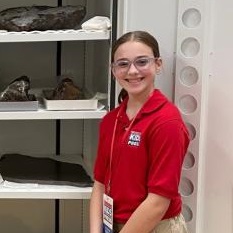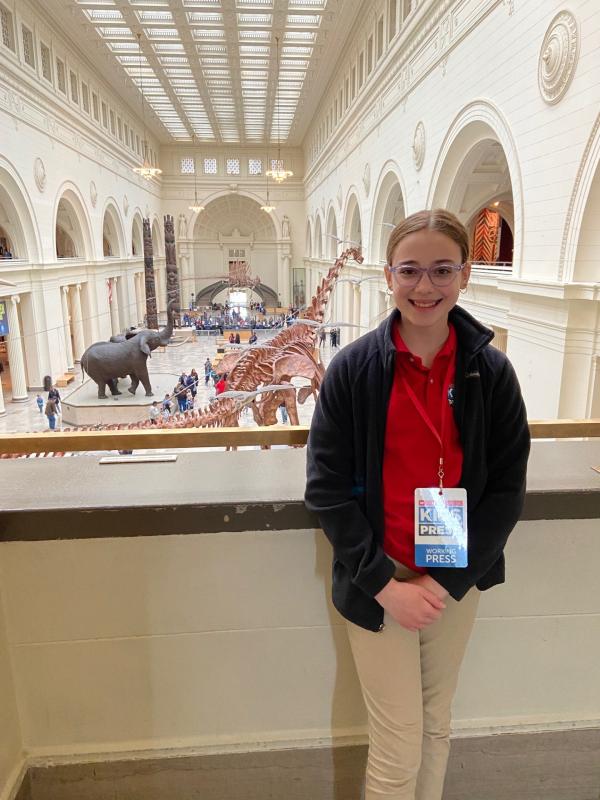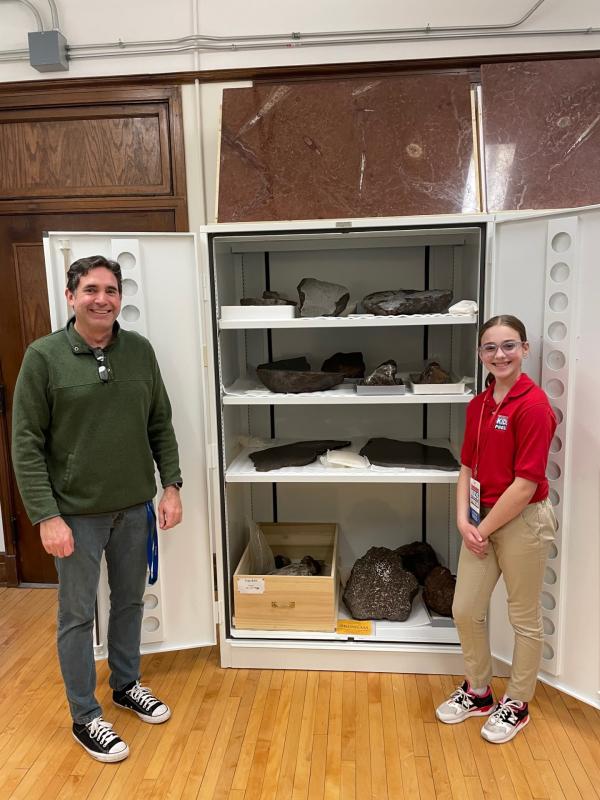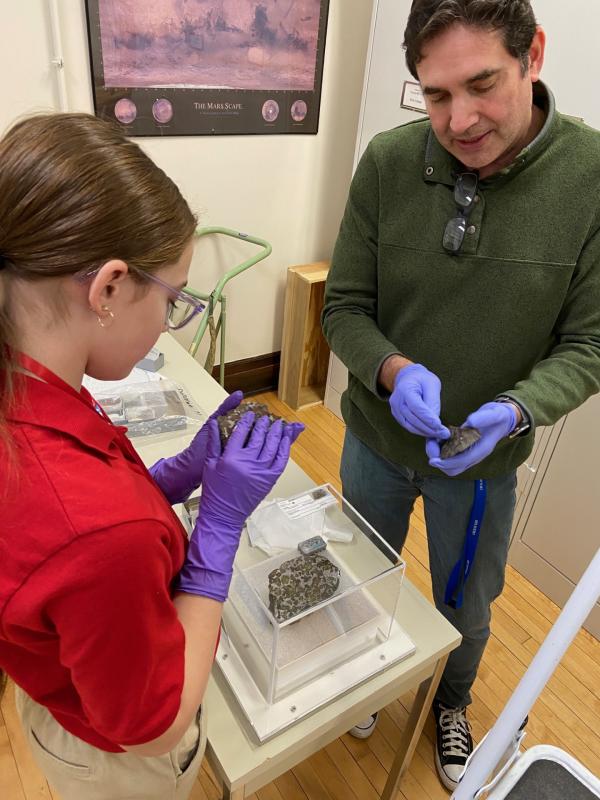KID REPORTERS’ NOTEBOOK
Learning About Meteorites


Evy at the Field Museum in Chicago, Illinois
I recently visited the Field Museum of Natural History in Chicago, Illinois. In a previous article, I explored the African elephants and Maximo the Titanosaur on display in Stanley Field Hall. For a second article, I spoke with Jingmai O'Connor, associate curator of fossil reptiles.
The Field Museum is also home to the Robert A. Pritzker Center for Meteoritics and Polar Studies. According to the center’s website, scientists there “curate one of the world's largest meteorite collections and provide the scientific community with samples for high-quality scientific research.”

Evy with James Holstein, collections manager at the Robert A. Pritzker Center for Meteoritics and Polar Studies
“LIFE ON OTHER PLANETS”
I wanted to learn more about meteorites. So I spoke with James Holstein, the center’s collections manager. He tracks more than 65,000 gems, meteorites, minerals, and rocks.
Color and weight are two ways to tell the difference between Earth rocks and meteorites. “A meteorite may have a dark fusion crust [a thin, glassy layer],” Holstein said. “Iron meteorites and some stone meteorites are heavier than ordinary Earth rocks.”
We walked into a room with interesting storage. Freezer units and cabinets lined the walls. Holstein gave me gloves and carefully handed me a meteorite from Mars.
“The universe is a vast place,” he said, as we talked about planets, stars, aliens, and UFOs. “I believe there are aliens. I don’t believe there are aliens on Earth or that aliens have ever visited Earth. But I believe there’s life on other planets.”

Evy examines a meteorite.
“DYNAMIC” AND “EVER-CHANGING”
My journey behind the scenes at the museum was exciting and educational. I saw how much research is involved. In some cases, the public may only see a small part of that.
“This is a dynamic, ever-changing, ever-growing institution,” O’Connor said. “It’s at the forefront of the research community with regard to understanding the natural world.” Then he added that some people may think of museums as “boring, old, and stuffy. We’re anything but that.”
